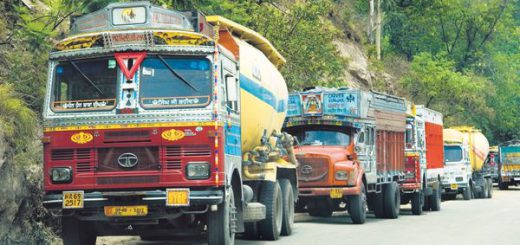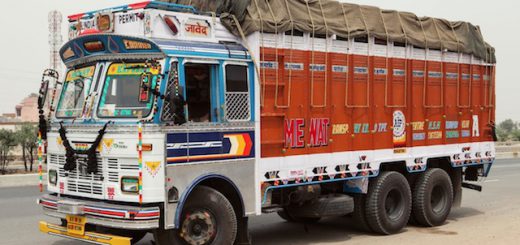PM Modi launches mega infra connectivity plan Gati Shakti
Under the mission of Gati Shakti, infrastructure projects worth over ₹111 lakh crore will be planned and implemented in the next four years.
Prime Minister Narendra Modi on Wednesday launched a national master plan Gati Shakti for multi-modal connectivity to ensure integrated planning and implementation of infrastructure projects in the next four years, with a focus on expediting works on the ground, saving costs, and creating jobs.
The online “holistic governance” system – PM Gati Shakti – aims to reduce logistics costs and boost the economy with a planned National Infrastructure Pipeline of over ₹111 lakh crore.
The Prime Minister said that with the resolve of “Atmanirbhar Bharat” (self-reliant India), the foundation for the next 25 years is being laid, and it will provide “Gati Shakti (speed and power) to the 21st century India”.
“PM Gati Shakti Master Plan not only brings together governmental processes and various stakeholders but also helps to connect different modes of transportation. This is an extension of holistic governance,” Modi said while institutionalizing an integrated approach of implementing infrastructure projects initially by 16 central ministries. He also inaugurated a new exhibition complex at Pragati Maidan in the national capital.
PM Gati Shakti joins different departments for the coordinated development of projects, from road to railways, aviation to agriculture, Modi said. It involves the creation of a common umbrella platform through which infrastructure projects can be planned and implemented in an efficacious manner by way of coordination between various ministries/departments on a real-time basis.
The integrated approach is in line with the government’s plan to raise capital expenditure to boost the economy. Union finance minter Nirmala Sitharaman, in her Budget speech on February 1, announced a ₹5.54 lakh crore capital expenditure (capex) plan in the current financial year. In August, she also unveiled a ₹6 lakh crore plan to monetize the central government’s brownfield assets in four years, which is coterminous with the ₹111 lakh crore National Infrastructure Pipeline (NIP).
Saying that an integrated approach will change the perception behind the age-old signage, “work in progress” indicating incomplete infrastructure projects, PM Modi added that the signage had become “the symbol of lack of trust”, but “today’s, 21st century India is leaving behind this old systems and practices”.
“Today’s mantra is – ‘Work for Progress’, ‘Wealth for Progress’, ‘Plan for progress’, ‘Preference for progress’… We have not only developed a work culture of completing the projects within the stipulated time frame but efforts are now being made to complete the projects ahead of time,” he said.
Modi said that during a review of infrastructure projects in 2014, he found that hundreds of projects were incomplete due to the lack of departmental coordination. He brought all projects on a single platform and tried to remove hurdles. “Now the focus is on avoiding delays due to lack of coordination… Because of this, many unfinished projects are being completed,” he said.
The PM said the change in approach has resulted in expeditious completion of infra projects. Before 2014, only 1,900km of railway lines underwent doubling. But, in the last seven years, more than 9,000km of railway lines have been doubled. Only 3,000km of railway lines were electrified before 2014, but in the last seven years, more than 24,000km of railway tracks have been electrified, he said. Similarly, before 2014, only 60-gram panchayats were connected with optical fiber, which is now expanded to 150,000 panchayats in just seven years.
Union ministers Nitin Gadkari, Piyush Goyal, Jyotiraditya Scindia, Hardeep Singh Puri, Ashwini Vaishnaw and Sarbananda Sonowal were present at Wednesday’s event.
PM Modi said infrastructure had not been a priority for most of the political parties as it was not even visible in their manifesto. Now, some opposition parties are criticising the construction of necessary infrastructure, he said. It is globally accepted that the creation of quality infrastructure is the way for sustainable development, which gives rise to several economic activities and creates employment on a large scale, he added.
Speaking at the event, Aditya Birla Group chairman Kumar Mangalam Birla said: “This is yet another example where India is setting a global benchmark for digital governance… Building and managing high-quality infrastructure is a national enterprise. Furthermore, roads and rivers do not respect state boundaries. A holistic approach to infrastructure therefore has to navigate the challenges of working through a complex federal system. It is almost like conducting a grand yet complex orchestra. The outcome is a symphony like Gati Shakti.”
According to Confederation of Indian Industry (CII) president TV Narendran, the PM Gati Shakti National Master Plan is “a game-changer for the industry” due to “scale and speed”.
Narendran, who is also CEO and managing director of Tata Steel Ltd, highlighted the key impacts of PM Gati Shakti. “First, with a GIS-based ERP system to map the existing and proposed connectivity projects, there will be immense clarity on how different regions and industrial hubs in the country are linked, particularly for last-mile connectivity,” he said.
“Second, a holistic and integrated transport connectivity strategy which incorporates roads and highways, railways, ports, airports and waterways into a single, well-targeted, synergistic network will greatly support Make in India and integrate different modes of transport,” he said.
source: https://www.hindustantimes.com/




Recent Comments